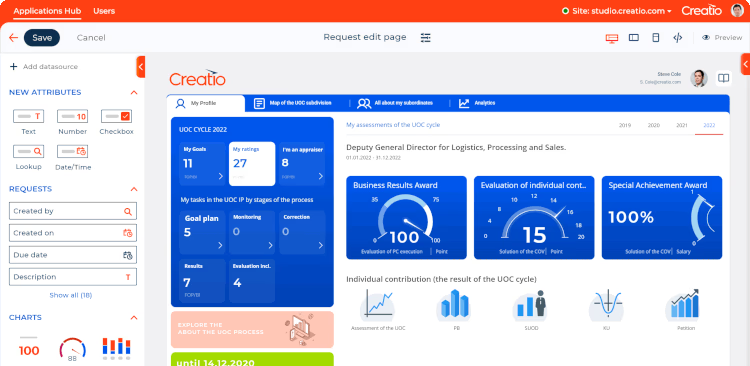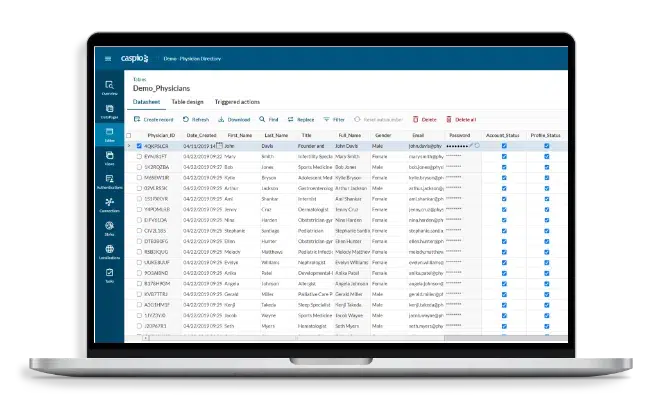No-Code Open System Database Development: Streamline Complicated Growth Tasks
No-Code Open System Database Development: Streamline Complicated Growth Tasks
Blog Article
Exploring the Advantages of Scalable Databases That Need No Coding Skills for Reliable Information Administration Solutions
The emergence of scalable data sources that remove the necessity for coding abilities provides a transformative possibility for organizations looking for effective information administration options. By making it possible for non-technical individuals to harness the power of data with user-friendly user interfaces, these systems improve ease of access and foster cooperation throughout diverse groups. Their cost-effectiveness and versatility to evolving organization demands can considerably improve operational procedures. As we consider the ramifications of such improvements, it becomes important to examine just how they can reshape the landscape of data monitoring and drive lasting development in an affordable setting.
Improved Access for Customers
Improved access for individuals is a vital facet of scalable data sources, guaranteeing that information monitoring systems are intuitive and straightforward. In an age where data-driven choices are paramount, access permits a larger series of individuals, including those without considerable technological proficiency, to engage with database systems successfully. This democratization of information accessibility facilitates improved partnership across departments, encouraging workers to make and remove insights notified choices.
Easy to use user interfaces, such as drag-and-drop functions and visual data depiction, streamline complicated data communications. These enhancements lower the knowing contour connected with typical data source monitoring, making it possible for customers to concentrate on leveraging data rather than grappling with technical complexities. Additionally, scalable data sources usually integrate real-time analytics and adjustable control panels, supplying customers with prompt understandings customized to their details needs.

Cost-Effectiveness and Source Cost Savings
Reliable data management not only rests on accessibility however likewise on cost-effectiveness and resource savings. Scalable data sources made for individuals without coding abilities considerably decrease financial worries generally connected with standard data source administration systems. By removing the need for specialized programming know-how, companies can allocate their sources extra successfully, concentrating funds on core service tasks instead of extensive training or hiring knowledgeable employees.
Moreover, these data sources frequently make use of cloud-based solutions, which better reduce prices connected to equipment and maintenance. Organizations can scale their data source solutions according to their requirements, preventing the expenses incurred from over-provisioning resources. This flexibility means services can adapt to altering demands without incurring unnecessary costs, leading to significant long-term financial savings.
Additionally, easy to use user interfaces simplify information access and management processes, reducing the time invested on management tasks. This performance equates right into labor expense financial savings, permitting teams to concentrate on calculated efforts as opposed to routine maintenance. Overall, taking on scalable data sources that require no coding skills cultivates an extra economical strategy to data management, enabling organizations to optimize their sources while keeping high levels of functional effectiveness.
Improved Collaboration Across Teams

Additionally, scalable data sources promote seamless interaction among staff member. With straightforward user interfaces that require no coding abilities, staff members can quickly produce, change, and share reports or control panels customized to their certain needs. This democratization of information equips non-technical individuals to contribute insights, boosting the joint atmosphere.
Additionally, these databases sustain concurrent access, permitting numerous individuals to service the exact same dataset concurrently. This feature enhances performance, as teams can involve in joint information evaluation without the threat of variation control problems. The capacity to leave remarks or notes straight within the data source additionally advertises discussion and makes clear data analyses.
Streamlined Information Monitoring Processes
In today's data-driven atmosphere, companies recognize the requirement of structured information administration processes to make the most of efficiency and precision. By leveraging scalable data sources that require no coding abilities, companies can streamline their information handling and lower the complexities typically related to standard database systems. This access equips non-technical individuals to involve directly with data, facilitating quicker decision-making and lowering dependence on specialized IT personnel.
Structured information administration processes boost workflow by automating routine tasks such as data entrance, recognition, and reporting. Automated data combination ensures that details from different resources is aggregated seamlessly, eliminating silos and fostering a merged sight of critical service metrics (no-code). In addition, easy to use user interfaces permit personnel to manipulate information quickly, allowing them to create insights that drive critical efforts without the need for comprehensive training.
This effectiveness not just speeds up functional procedures yet additionally reduces the capacity for human mistake, making certain that information continues to be exact and reputable. Ultimately, streamlined information monitoring processes through scalable databases bring about improved efficiency, permitting companies to concentrate on core activities while making certain that their data monitoring techniques are efficient and reliable.
Scalability for Growing Companies

For expanding ventures, the capacity to scale up or down is critical. A scalable database can manage an influx of information produced from new consumers, products, or services, making sure that company operations remain continuous. In addition, these databases give the capacity to take care of peak loads effectively, which is essential during durations of quick development or seasonal spikes.
Furthermore, several scalable data source services are created with easy to use user interfaces that require no coding abilities, equipping non-technical team to manage information effectively (no-code). This democratization of data monitoring enables organizations to allocate resources purposefully and reduce reliance on specialized IT employees
Inevitably, embracing a scalable database not only improves functional performance yet also promotes an environment where companies can develop and introduce without the restrictions of traditional database systems. This versatility placements organizations for long-lasting success in today's affordable landscape.
Conclusion
To conclude, scalable databases that call for no coding skills give significant benefits for reliable information administration. These systems boost access for non-technical customers, decrease functional costs, and promote partnership throughout groups. By improving information monitoring processes and using scalability for growing services, such services allow organizations to adapt to transforming demands successfully. Inevitably, the adoption of these user-friendly databases cultivates technology and settings services for long-term success in a dynamic atmosphere.
Boosted access for individuals is a critical facet of scalable databases, making sure that information management systems are user-friendly and user-friendly.Straightforward user interfaces, such as visual data and drag-and-drop functions representation, simplify complicated data interactions. Overall, embracing scalable databases that need no coding skills fosters a more cost-efficient approach to information monitoring, enabling companies to maximize their sources while keeping high degrees of useful content functional effectiveness.
By leveraging scalable data sources that call for no coding abilities, services can simplify their data handling and reduce the complexities normally connected with standard data source systems - no-code.Structured information monitoring processes enhance workflow by automating regular jobs such as data entry, recognition, and coverage
Report this page